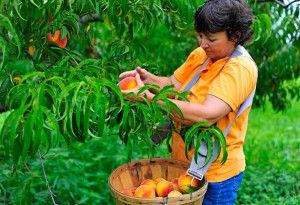Signs of hope grow one year after drought

August 9, 2013
Local farmers are breathing a sigh of relief this summer as higher precipitation rates are allowing them to move forward from last year’s drought.
The summer of 2012 caused one of the worst droughts in southern Illinois’ history. According to data from Illinois surveys by the Prairie Research Institute, the average temperature for July 2012 was 81.8 degrees Fahrenheit, which is 6.5 degrees higher than the average from 1981-2010, making it the second warmest July recorded in Illinois with most areas of the state experiencing extreme to exceptional amounts of dryness. While most farmers have been able to move on and are in better shape than they were last year, many have not forgotten the drought and the memory of last summer is still fresh in their minds.Chris Vick, a researcher in the department of agriculture, said the department at the university had to spend a lot of time and money to maintain their fields.
Advertisement
“It was severe. We spent most of our summer and most of our time and resources watering our crops,” he said. “We had to keep them alive with irrigation, and without the irrigation and water, we would basically have had no plot whatsoever.”
Vick said last summer might have been the worst drought the Carbondale area has ever had. He said the lack of rain on top of the excessive heat were the two main reasons growing anything was difficult during the drought.
While these factors affected the overall severity of the drought, Vick said the largest factor in crop loss was that farmers were just not prepared for how severe the drought would become.
According to Illinois state water surveys by the Prairie Research Institute, the amount of topsoil moisture measured July 23, 2012 was 99 percent short or very short of adequate moisture content, with 80 percent being very short. This is a stark contrast from the July 22 topsoil measurement this year, which showed topsoil having 73 percent adequate or surplus moisture.
“We were ill-prepared last year for what was about to come. Everybody was,” he said. “If we knew (the drought) was that severe, we would have done things differently as far as watering earlier.”
LeRoy Yoder, owner and partner of Echo Valley Orchard, said a number of his orchard’s crops suffered from the extreme heat.
“The biggest thing we are seeing from the drought is that it probably didn’t size the peaches last year and it didn’t size the apples because it was too hot and dry,” he said. “Having said that, we have not pulled a number of trees because they couldn’t get their root nutrients.”
Advertisement*
Sara Lipe, the fourth generation co-owner of her family’s 40-acre orchard, Lipe Orchard, said the drought had a large impact on the trees and fruit.
“The drought was very difficult,” she said. “The year started off good, but without any rain, the fruit wouldn’t size, plants were dying and some of the trees died from the stress of the drought.”
Lipe said the drought affected the size and overall volume of her fruits, causing her orchard to bring in less revenue than most years. She said the drought also caused long-term stress on some of her trees, causing them to die.
Though farmers suffered through one of the hottest summers in the state’s history, many said they are faring better this year and are ready for future droughts.
Vick said this summer is different from last year and it has been easier to farm.
“Here in Carbondale, we have maintained above average rainfall. We’ve basically had to irrigate very, very little this year and the crops look good,” he said. “Last year, about this time, things were pretty much dead; all the grass was dead along with most of our crops.”
Vick said the agriculture department has taken measures to make sure the department is prepared for another drought. He said the department spent almost $60,000 on a new irrigation system, which will upgrade irrigation efficiency and capacity.
Yoder said this year has been more successful because the amount of fruit he grows has increased and his trees are producing new fruit at a quicker pace. He said while his orchard is producing a larger amount of fruit this year, the effects of last year can still be seen, such as a variation in the number of usable fruits.
Yoder said he is also increasing the amount of irrigation for his plants in order to prepare for another drought in the coming years.
Lipe said this year has also shown an increase in the number and quality of fruit at her family’s orchard.
“The fruit is much larger, it’s juicier and the trees are healthy,” she said. “Things don’t look stressed like they’re struggling to survive.”
The Daily Egyptian contacted Greenridge Farm several times by phone for comment to follow up with them this year, but did not receive a response by press time Wednesday.
Advertisement







